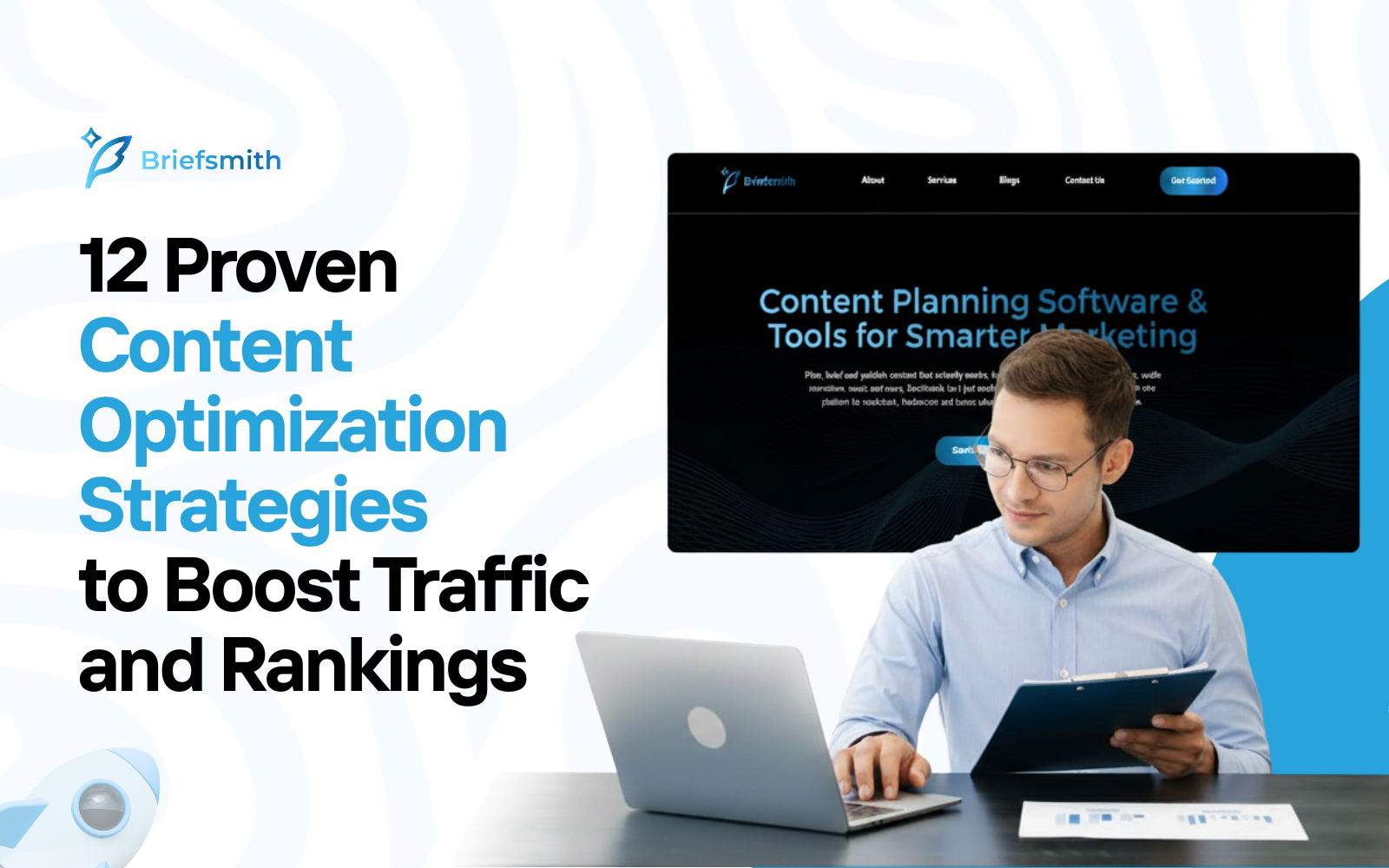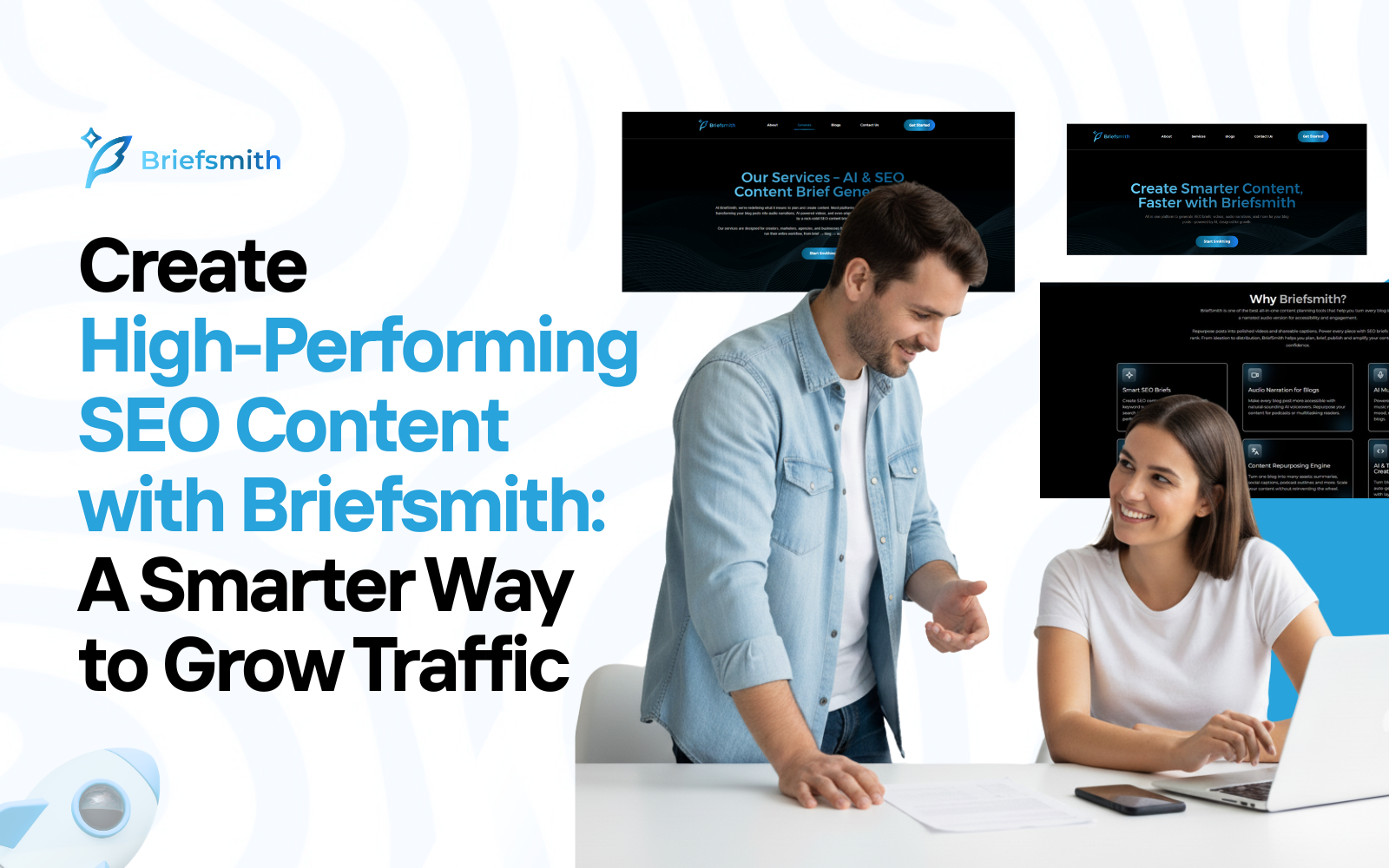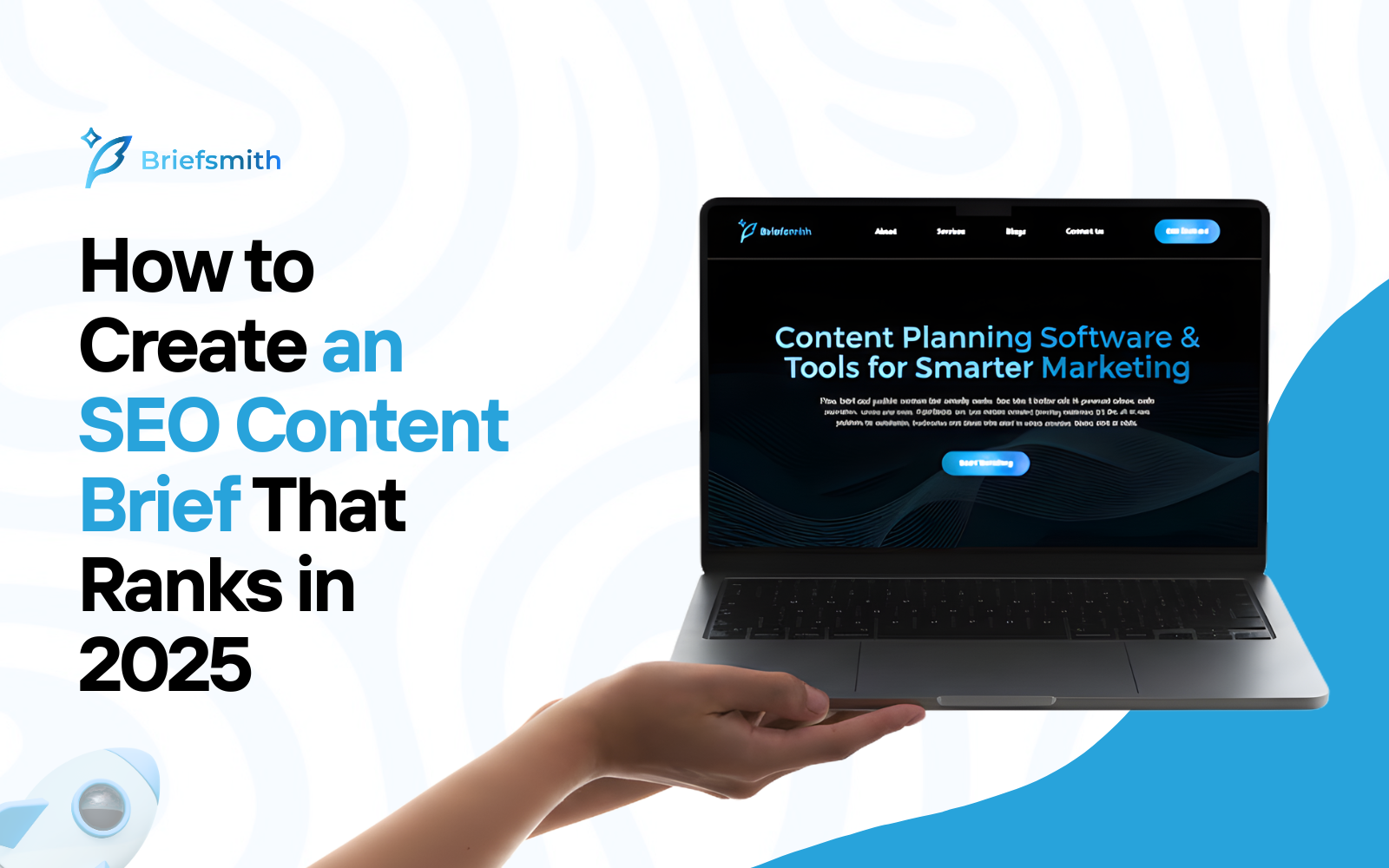12 Proven Content Optimization Strategies to Boost Traffic and Rankings

Let’s be honest. Publishing content and hoping it ranks is not a strategy. It’s simple wishful thinking.
If your blog is not getting traction, it’s not that Google hates you. It’s just that your content isn’t optimized to earn visibility.
The good news? That’s fixable.
In 2025, the most successful marketers use focused content optimization strategies i.e. blending creativity with SEO science. It is less about gaming algorithms and more about making content that is extremely useful and easy to find.
Below mentioned are the 12 proven tactics that will help you optimize website content, climb rankings, and keep readers coming back for more.
Start With Search Intent
Every great piece of content starts with a clear understanding of why someone’s searching.
Are they:
- Learning? (“What is content optimization?”)
- Comparing? (‘Best content optimization tools?”)
- Buying? (“Purchase SEO content software”)
Match your content type to the intent. If your audience wants a tutorial, don’t give them a sales pitch.
Nail intent, and you will instantly improve engagement and lower bounce rates, which happen to be two quiet SEO ranking factors that matter a lot.
If you need a refresher, you can visit Google’s Search Quality Rater Guidelines that outline exactly how “helpful” content is evaluated.
Optimize Your Titles Like Headlines, Not Labels
Your title tag is your first impression in the SERPs. Make it count.
A bland headline like “Content Optimization Strategies for 2025” will get lost in the noise. Instead, try something like:
“12 Proven Content Optimization Strategies to Skyrocket Traffic in 2025”
Use your primary keyword naturally, but make it sound human. Front-load power words (‘proven”, “boost”,”ultimate”) to grab attention.
Remember to always test click-through rates. Sometimes, a tiny tweak, one word, can double your clicks.
Master On-Page SEO Techniques
This one’s table stakes, but still overlooked.
For every page, make sure you:
- Use your primary keyword in the title, intro, and one H2.
- Include secondary keywords naturally (like “on-page SEO techniques,” “content marketing tips”).
- Add internal links to related content.
- Use descriptive alt text for images.
- Write meta descriptions that make people want to click.
Don’t overdo it. On-page SEO is about structure, not stuffing. If it reads awkwardly out loud, it’s probably harming your rankings.
Make Your Introduction Work Harder
Your intro has one job: to make the readers stay.
It’s best to avoid the “SEO textbook” vibe. Instead of opening with “Content optimization is important for SEO”, say something like:
“If your blog isn’t ranking, it’s not your keywords. It’s just that your content strategy is stuck in 2015.”
The first three sentences should hook, promise value, and signal tone. Think of it as your 10 second audition where impressing the audience matters the most.
Use Topic Clusters, Not One-Off Posts
Google doesn’t just rank pages in isolation anymore. It ranks ecosystems of content.
Create topic clusters. Topic clusters is a hub page around a big idea (like “Content Optimization”) and multiple subpages covering related topics (“On-page SEO,” “Content Audit Checklist,” “E-E-A-T in SEO”).
Each post links to the hub and to each other. This builds topical authority and improves crawlability which are two major ranking signals.
Briefsmith makes this simple with internal link mapping, so you can plan your entire content ecosystem from one dashboard.
Improve Readability As It Is An SEO Ranking Factor
Dense text kills the engagement.
Break long sections into short paragraphs (2-4 lines max). Use bullet points, numbered lists, and bold for emphasis.
Your readers are skimming on mobile screens mostly and not expecting a novel. Simple, clear language wins. Always.
Update and Repurpose Existing Content
One of the fastest content marketing tips for growth? Don’t just publish new content, but also refresh what’s already there.
Update the stats, replace outdated links, and improve structure for readability. Then repurpose it. Turn the blog posts into:
- Short LinkedIn posts
- Carousel slides
- Narrated audio snippets (Briefsmith can do this automatically)
Freshness is a ranking factor, and repurposing saves you hours.
Optimize for Featured Snippets
Want position zero? Aim for featured snippets.
Structure content in snippet-friendly formats:
- List (“Top 10…”),
- Step-by-step processes,
- Short, clear answers under 40 words.
Use an H2 question and answer it directly beneath. Example:
What are content optimization strategies?
Content optimization strategies are techniques used to improve visibility, engagement, and SEO performance through keyword alignment, formatting, and user intent.
Snippets drive visibility and authority faster than most link-building campaigns.
Add E-E-A-T (Experience, Expertise, Authoritativeness, Trust)
Google’s ranking system in 2025 loves credibility. Show it.
- Add author bios that display credentials.
- Link to authoritative sources.
- Use real examples and data.
- Publish under verified brand domains.
Readers trust transparency. Google rewards it.
Optimize Website Content for Engagement
Engagement isn’t vanity. It’s validation.
Add interactive elements:
- Polls, quizzes, or calculators
- Click-to-tweet quotes
- Embedded videos
Even subtle changes like bold callouts or shaded boxes for takeaways make content easier to scan and more memorable.
Engagement metrics (scroll, depth, dwell time) indirectly signal quality which boosts rankings.
Build a Consistent Content Workflow
If you’re serious about scaling, you need a content workflow for marketing teams, not chaos.
Your team should know:
- Who’s researching keywords
- Who’s drafting briefs
- Who’s reviewing for SEO and tone
- Who’s optimizing and publishing
Briefsmith’s workflow tools make this seamless from research to writing to audio narration.
When your process is consistent, optimization becomes automatic.
Track, Measure, and Iterate
Optimization isn’t a one-time event. It’s an ongoing process.
Set up dashboards for:
- Keyword rankings
- Organic traffic
- Click-through rates
- Conversion goals
Use those insights to refine your next piece.
If something is not working, don’t scrap it. Optimize it instead. Small edits often create massive gains.
The Future of Content Optimization
As AI generated content floods the web, human strategy becomes your edge.
Tools can write, but they can’t understand brand nuance, audience emotions, or market timing. That’s where you take the trophy home.
The most effective content optimization strategies of 2025 will combine automation (for speed) with human insight (for quality).
Briefsmith exists for that exactly. To let the marketers research, brief, and repurpose smarter, without sacrificing authenticity.
Final Thoughts
SEO isn’t just about pleasing the algorithms anymore it’s about earning trust at scale.
When your content is structured, updated, and optimized for both humans and search engines, traffic becomes predictable and not lucky.
Start with one or two of these content optimization strategies, and build momentum. For consistent optimization, not perfect execution, is what wins long term.
Ready to Optimize Smarter, Not Harder?
Stop guessing. Start ranking
Try Briefsmith The all-in-one content planning and SEO brief tool that helps you research, optimize, and repurpose content faster!
Related: AI Content Brief Generators: Do They Really Save You Time?



